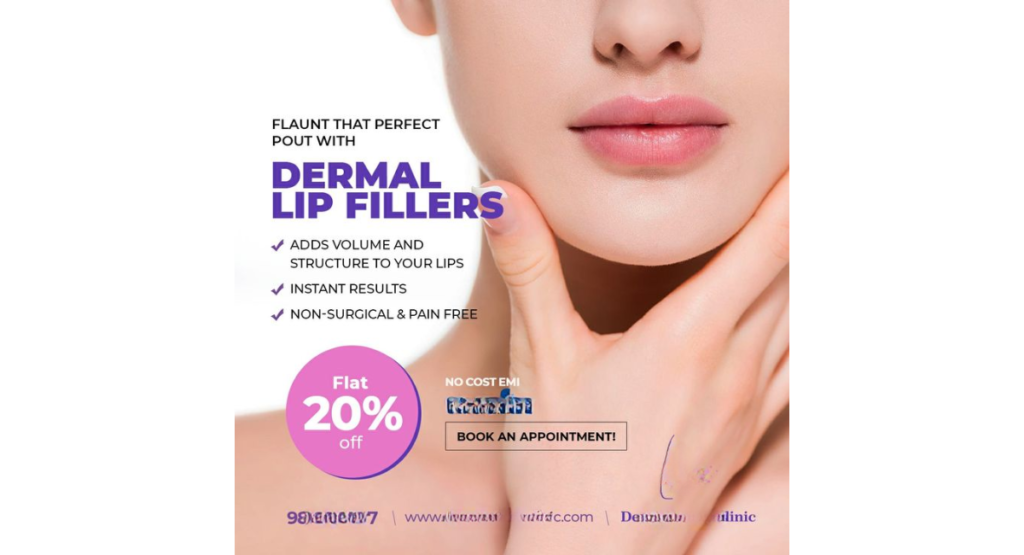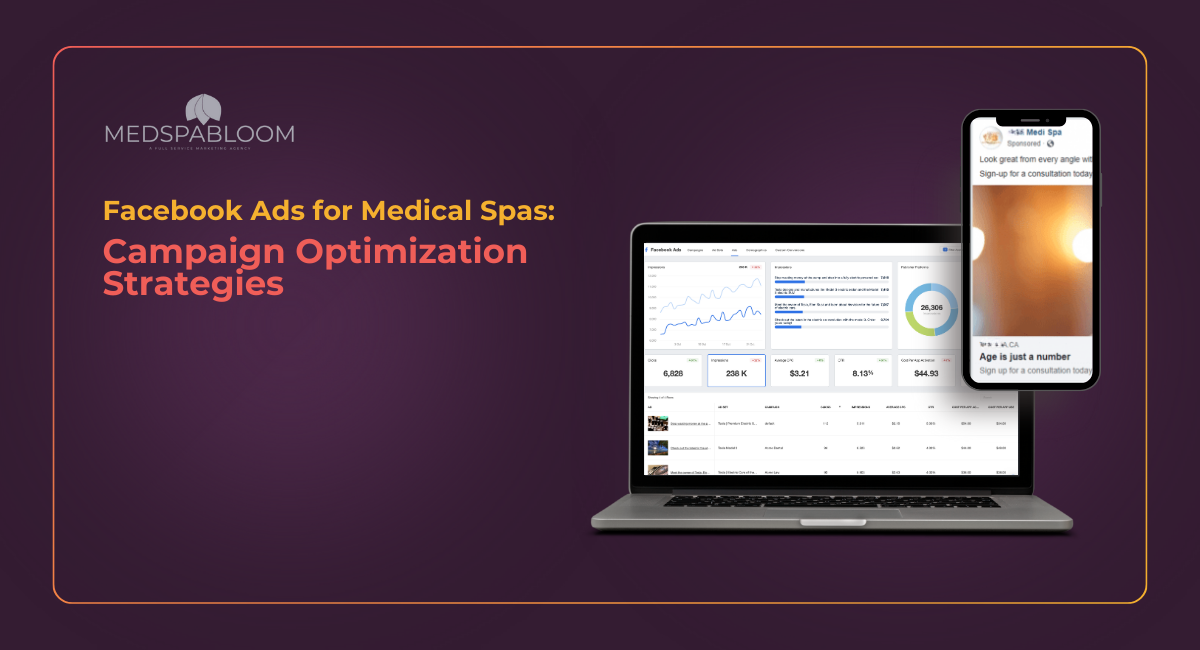Optimizing Facebook Ads for a medspa requires tailored strategies that consider the specific goals, audience, and services offered by the medspa. Here are detailed optimization techniques and their respective benefits, along with suggestions on when to apply each optimization:
1. Audience Targeting
- Custom Audiences: Use data from past clients, website visitors, or those who have interacted with your social media to create highly targeted audiences. This will improve ad relevance and engagement.
- When to Apply: Always start with custom audiences for higher engagement and conversion rates.
- Lookalike Audiences: Create lookalike audiences based on your best customers to reach new, similar clients.
- When to Apply: After gathering sufficient data from custom audiences to expand reach efficiently.
- Detailed Targeting: Use demographics, interests, and behaviors relevant to medspa services (e.g., beauty, wellness, anti-aging).
- When to Apply: From the beginning, refine targeting over time based on performance data.
2. Ad Creative
- Visuals and Videos: Use high-quality images and videos showcasing treatments, before-and-after results, and client testimonials.
- Why: Engaging visuals attract attention and build trust.
- When to Apply: Continuously, updating regularly to keep content fresh.
- Ad Copy: Write clear, compelling ad copy highlighting the benefits of your services and include a strong call-to-action (CTA).
- Why: Effective copy drives clicks and conversions.
- When to Apply: From the start, with periodic updates based on performance.
- A/B Testing: Test different ad creatives, formats, and CTAs to determine what resonates most with your audience.
- Why: Identifies the most effective elements.
- When to Apply: Continuously, with new tests every few weeks.

3. Budget Management
- Daily vs. Lifetime Budget: Choose the best budgeting option to control spend and maximize ROI.
- Why: Ensures efficient use of budget based on campaign goals.
- When to Apply: Start with daily budgets for flexibility; switch to lifetime budgets for consistent long-term campaigns.
- Bid Strategies: Use different bid strategies such as cost per click (CPC), cost per thousand impressions (CPM), or cost per action (CPA).
- Why: Maximizes cost-efficiency and aligns with campaign objectives.
- When to Apply: Adjust based on campaign performance and goals.
4. Ad Placement
- Automatic Placements: Let Facebook optimize where your ads appear across its network.
- Why: Ensures the best possible delivery and performance.
- When to Apply: Initially, until enough data is gathered to decide on manual placements.
- Manual Placements: Choose specific placements like Facebook Feed, Instagram, Messenger, etc.
- Why: Tailors ad delivery to where your audience is most active.
- When to Apply: After identifying high-performing placements.
5. Campaign Objectives
- Align Objectives: Choose the right campaign objective based on your goals (e.g., lead generation, bookings, brand awareness).
- Why: Ensures the campaign is optimized for desired actions.
- When to Apply: At the campaign setup, reassess periodically based on results.
- Conversion Tracking: Set up Facebook Pixel to track and measure conversions.
- Why: Provides data on the effectiveness of your ads.
- When to Apply: Immediately, to gather data from the start.

6. Performance Monitoring and Analysis
- Key Metrics: Monitor KPIs like click-through rate (CTR), conversion rate, cost per conversion, etc.
- Why: Helps identify areas for improvement.
- When to Apply: Continuously, with regular reviews.
- Facebook Analytics: Use analytics tools to gain insights into your campaign performance.
- Why: Provides in-depth understanding and aids in optimization.
- When to Apply: Continuously, to inform decisions.
7. Ad Scheduling
- Ad Delivery: Schedule your ads to run during peak times when your audience is most active.
- Why: Maximizes exposure and engagement.
- When to Apply: Based on insights from audience behavior data.
- Dayparting: Run ads on specific days and times to maximize engagement and conversions.
- Why: Optimizes budget allocation.
- When to Apply: After identifying peak engagement times.
8. Audience Insights
- Analyze Data: Use Facebook Audience Insights to understand your audience better.
- Why: Refines targeting and messaging.
- When to Apply: Regularly, to stay aligned with audience preferences.
- Adjust Targeting: Refine your targeting based on the insights gained from audience analysis.
- Why: Improves relevance and performance.
- When to Apply: Continuously, as new data becomes available.
9. Landing Page Optimization
- Relevant Content: Ensure your landing page is relevant to the ad content.
- Why: Provides a seamless user experience and improves conversions.
- When to Apply: At the start, with regular reviews.
- Load Speed: Optimize the loading speed of your landing page.
- Why: Reduces bounce rates and improves user experience.
- When to Apply: Immediately and continuously monitor.
- Mobile Optimization: Make sure your landing page is mobile-friendly.
- Why: Enhances user experience on mobile devices, which are commonly used.
- When to Apply: From the start, with regular checks.
10. Ad Frequency
- Frequency Capping: Limit the number of times your ad is shown to the same person to avoid ad fatigue.
- Why: Prevents audience fatigue and maintains engagement.
- When to Apply: Monitor and adjust based on frequency metrics.
- Ad Rotation: Rotate different ad creatives to keep the audience engaged.
- Why: Keeps content fresh and interesting.
- When to Apply: Regularly, based on performance data.
11. Dynamic Ads
- Dynamic Product Ads: Automatically promote your entire product catalog across all devices.
- Why: Personalizes the user experience and improves relevance.
- When to Apply: If offering a range of products or treatments.
- Personalization: Use dynamic ads to show personalized content to users based on their interactions with your site.
- Why: Increases relevance and engagement.
- When to Apply: Once sufficient user data is collected.
12. Experimentation
- Split Testing: Regularly conduct split tests to find out which elements work best.
- Why: Continuously improves ad performance.
- When to Apply: Ongoing, with new tests every few weeks.
- Incremental Testing: Make small, incremental changes to test their impact on performance.
- Why: Allows for precise optimization.
- When to Apply: Continuously, based on performance data.

Implementing these optimizations can significantly enhance the effectiveness of your Facebook Ads campaigns for a medspa, leading to better engagement, higher conversion rates, and an improved return on investment.
Schedule A Free Marketing Consult
Want advice on how you can get more new patient leads? We would be happy to do an online marketing audit and let you know areas that could improve and how to do it. We believe in helping and educating medspa owners so they can DIY their marketing where needed and save cost, but we’re always here to help when you need it. Plans start at only $199/month.
Let’s Chat!
Share this content:
